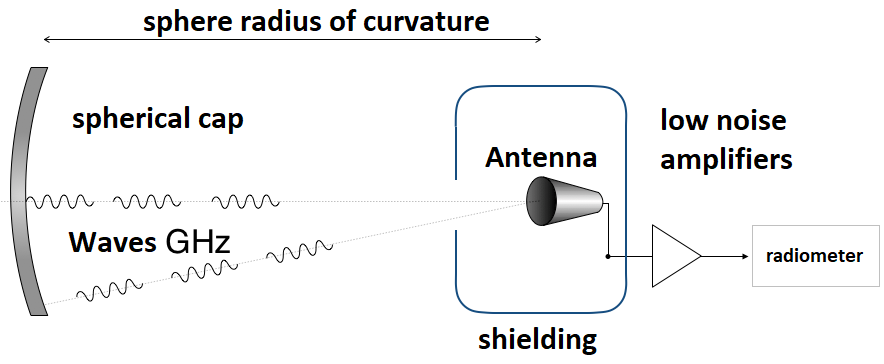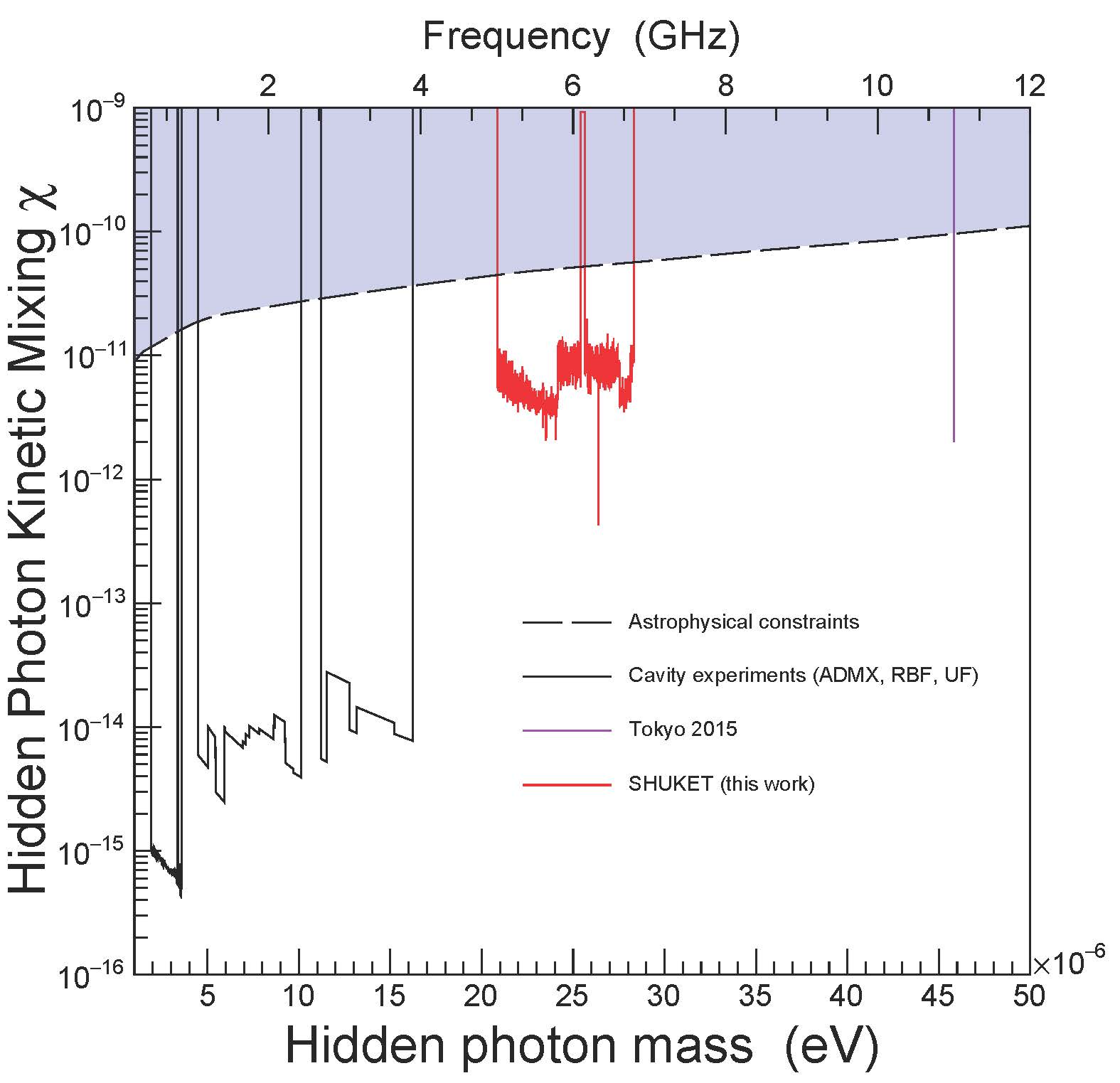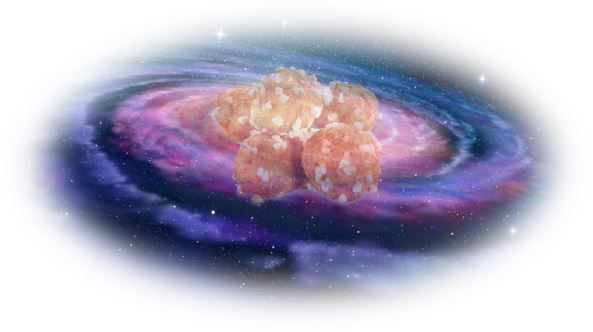The missing mass of the universe or non-baryonic dark matter is probably made up of particles that remain to be discovered. Massive and neutral, with very weak interactions, they still escape a detection that would identify them. While conventional photons are massless, dark matter could be made up of particles of a new type, similar to massive photons. New experimental results on the search for non-baryonic matter in this form, obtained by a team of three Irfu members, have just been published in Physical Review Letters[1].
New particles beyond the standard model
The construction of a dark matter model requires the addition of ingredients to the standard physics model of particle physics, as one of the existing particles have the right properties. Such a modi?cation can be for example the addition of a symmetry between bosons and fermions (supersymmetry) or the addition of new spatial dimensions. These two hypotheses lead to the prediction of so-called WIMPs, searched for in underground laboratories, at the LHC or in gamma astronomy. Other types of extensions of the model, inspired by string theory, show additional U(1) symmetries, leading to the addition of photon-like particles, some of which can be massive and mix with the conventional photon.
Detect these hypothetical massive photons
If they constitute the dark matter our galaxy is drowned into, these hypothetical massive photons would act in a way similar to an oscillating electrical potential. These particles would interact very weakly with conventional matter, with the consequence that the surfaces of conductive materials would emit a very low-power electromagnetic signal[2].

The SHUKET experiment (acronym for SearcH for U(1) darK matter with an Electromagnetic Telescope) was designed to search for this weak signal. The device uses the optical test bench for the mirrors of a future ground-based telescope network (CTA) in the basement of an Irfu building. The potentially emitting part consists of a 1.2 m2 aluminium sphere portion, manufactured by the SME Kerdry, also in charge of mirror production for the CTA network. This 32 m radius portion of a sphere is produced like the CTA mirrors, where the glass has been replaced by metal. In terms of detection, SHUKET used devices that were no longer used by other experiments (horn antenna, amplifiers) and benefited from a loan of a spectrum analyzer by Rohde & Schwartz.
120 hours of data acquisition allowed to constrain the power emitted by the spherical cap to 10-22 W/Hz between 5 GHz and 6.8 GHz. A signal of non-baryonic matter in this frequency range would appear as an excess of power that is constant over time, whose spectral shape is known and whose frequency depends on the mass of the massive photon. These expectations allow to reject parasitic signals that would be observed above the background noise ?uctuations and that do not have the right characteristics.

1 Hz bands and expected non-baryonic material signal shape. 
in the mixing / mass parameter space. The colored region is excluded by astrophysical measurements and the regions above the di?erences curves are excluded by laboratory experiments. The exclusion region obtained with SHUKET is shown in red. |
Figure 3 shows the residuals of the power measurement over a narrow frequency band between two datasets: in ON mode with the system aligned and in OFF mode with the system misaligned. A signal of the shape of the one drawn on this ?gure is systematically searched for in all the data. The absence of excess power due to dark matter leads to constraints on the values of the χ mixing parameter between massive and conventional photons χ.
The obtained constraints are presented as exclusion curves in ?gure 4. SHUKET excluded mixing parameters in the order of 5x10-11 in a mass range between 20.8 µeV and 28.3 µeV. String theory models predict mixing parameters between 10-11 and 10-3[3,4], but do not give a clear indication of the mass of the new photon.
The mass range targeted by SHUKET is in fact motivated by another candidate for non-baryonic matter: the axion. The latter provides a common solution to the missing mass and the absence of CP violation in strong interactions, considered unnatural. As such, the main interest of SHUKET is to prepare similar experiments with the spherical cap immersed in a strong dipole magnetic field. Such a device is currently being studied, it will make it possible to derive new constraints on the axions.
Contacts: Pierre Brun, Laurent Chevalier
[1] Direct Searches for Hidden-Photon Dark Matter with the SHUKET Experiment, P. Brun, L. Chevalier, C. Flouzat, Phys. Rev. Lett., 122, 2019801 (2019)
[2] Searching for WISPy Cold Dark Matter with a Dish Antenna, D. Horns, J. Jaeckel, A. Lindner, A. Lobanov, J. Redondo, A. Ringwald, JCAP 4, 016 (2013)
[3] Kinetic Mixing and the Supersymmetric Gauge Hierachy, K.R. Dienes, C. Kolda, J. March-Russel, Nucl. Phys. B 492, 104 (1997)
[4] Naturally Light Hidden Photons in LARGE Volume String Compactifications, M. Goodsell, J. Jaeckel, J. Redondo, A. Ringwald, JHEP 11, 027 (2009)
• Structure and evolution of the Universe › Dark Universe The ultimate constituents of matter
• The Electronics, Detectors and Computing Division • The Particle Physics Division




